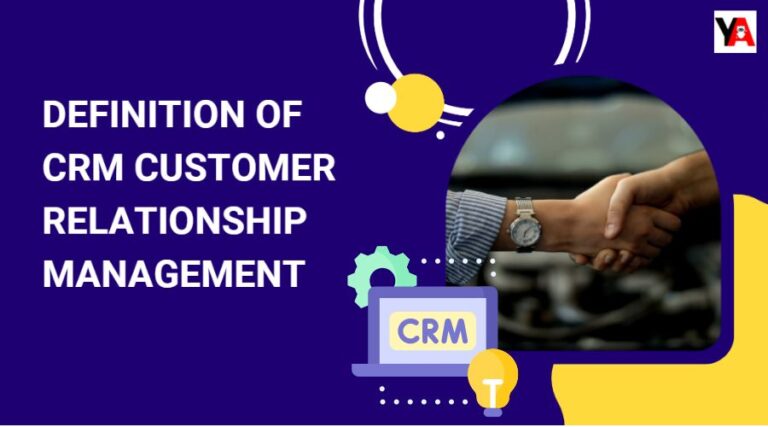Corporate growth strategies in strategic management serve as a company’s compass, helping it to sail through difficult times and achieve success. These carefully thought-out plans set companies on the path to long-term growth, helping them seize new opportunities, strengthen their positions, and realize their long-term goals.
This comprehensive guide dives deep into the intricacies of corporate growth strategies within the framework of strategic management. We’ll untangle the strategic tapestry, unveiling various approaches, analyzing their nuances, and empowering you to identify and implement the strategy that unlocks your company’s full potential.
Before starting this corporate growth strategies in strategic management journey, let’s create some common ground:
Strategic Management
The comprehensive process of formulating and implementing plans that propel an organization towards its long-term goals.
Corporate Growth
The deliberate and sustained increase in a company’s market share, revenue, profitability, or other key metrics.
Remember, growth isn’t always about sheer size. It can encompass expanding product offerings, entering new markets, or even strengthening brand recognition, tailoring success to your unique goals.
Table of Contents
Toggle4 Corporate Growth Strategies in Strategic Management
Now, let’s explore the four main corporate growth strategies in strategic management with an objective, each with its distinct advantages and potential drawbacks:
👉 Market Penetration: Cultivating Your Existing Patch
“Objective: Fertilize the existing market to reap a bountiful harvest of increased sales for your current products.“
Strategies
- Price Adjustments: Offering strategic discounts or tiered pricing models to entice new customers and incentivize repeat purchases.
- Marketing Magnification: Intensifying promotional campaigns, leveraging targeted advertising, and exploring innovative channels to reach a wider audience.
- Distribution Domination: Expanding your reach through new distribution channels or strengthening existing partnerships to ensure greater product visibility.
- Customer Service Symphony: Cultivating customer loyalty through exceptional service, fostering positive word-of-mouth, and driving repeat business.
Advantages
- Leverages existing infrastructure and expertise, minimizing implementation costs.
- Relatively lower risk compared to venturing into uncharted territories.
Disadvantages
- Limited growth potential within the existing market’s boundaries.
- Highly dependent on outmaneuvering competitors for a larger slice of the existing pie.
👉 Market Development: Expanding Your Horizons
“Objective: Explore new, fertile territories for your existing products, seeking fresh opportunities beyond your current market boundaries.“
Strategies
- Geographic Expansion: Setting sail for new regions or countries, tapping into previously untouched markets with your proven offerings.
- New Customer Segment Symphony: Identifying and targeting previously neglected demographics or industries, tailoring your value proposition to resonate with these new audiences.
- E-commerce Odyssey: Embarking on an online journey, leveraging e-commerce channels to reach wider audiences across geographical barriers.
- Strategic Partnerships: Joining forces with established players in new markets, leveraging their expertise and market access to accelerate your growth journey.
Advantages
- Opens doors to vast customer bases and potential revenue streams, unlocking significant growth potential.
- Diversify risk by entering new markets, making your organization less susceptible to fluctuations in any single market.
Disadvantages
- Requires significant investment in market research and adaptation to new cultural nuances and customer preferences.
- Faces intense competition from established players in the new market, demanding a well-defined competitive edge.
👉 Product Development: Cultivating New Offerings
“Objective: Innovate and diversify your product portfolio, catering to evolving customer needs and market trends.“
Strategies
- Innovation Symphony: Orchestrate a culture of innovation, developing entirely new products or significantly improving existing ones to stay ahead of the curve.
- Line Extension: Expand your product offerings within existing categories, catering to specific customer segments or addressing emerging needs.
- Product Diversification: Branch out, offering complementary products that cater to different needs within your broader target audience.
- Acquisition Acumen: Strategically acquire companies with relevant product portfolios, gaining instant access to established offerings and expertise.
Advantages
- Caters to evolving customer preferences and market trends, ensuring your offerings remain relevant and competitive.
- Creates differentiation from competitors, giving you a unique edge in the marketplace.
Disadvantages
- High research and development costs, demand careful financial planning and risk assessment.
- Risk of product failure if market acceptance is low, requiring thorough market research and product validation.
👉 Diversification
“Objective: Chart a course into entirely new markets with completely new products, venturing beyond your comfort zone for unprecedented growth opportunities.“
Strategies
- Related Diversification: Enter markets adjacent to your existing ones but with new products, leveraging existing expertise and brand recognition.
- Unrelated Diversification: Venture into completely new markets and product categories, seeking exponential growth potential but facing uncharted territory.
- Acquisitions/Mergers: Join forces with companies in different industries, combining resources and expertise for accelerated diversification.
Advantages
- Highest potential for growth by venturing into entirely new markets and product categories.
- Spreads risk across different industries and products, making your organization less susceptible to downturns in any single market.
Disadvantages
- The highest risk is due to entering unfamiliar territory and facing new competitors with established knowledge and expertise.
- Requires significant resources and expertise in new areas, demanding substantial investment and adaptation.
Choosing the Right Path and Navigating the Strategic Crossroads
The optimal growth strategy is akin to finding the perfect treasure map, unique to your organization’s specific landscape. Several factors act as your compass, guiding you toward the strategy that unlocks your hidden potential:
✔️ Industry Maturity: Is your industry experiencing explosive growth or stagnant saturation?
✔️ Competitive Environment: Which are your primary rivals and what are their key strength elements and weak points? Knowing your adversaries is crucial for crafting a winning strategy.
✔️ Company Resources: Do you have the financial, human, and technological resources to fuel your chosen path? Resources dictate the feasibility of different strategies.
✔️ Risk Tolerance: Are you an adventurous explorer seeking uncharted territories, or a cautious navigator preferring well-trodden paths? Your risk tolerance influences your strategic choices.
✔️ Organizational Culture: Is your company an innovation hub embracing change, or a traditional haven valuing stability? Culture shapes your ability to adapt and implement different strategies.
Beyond the Charts: Making Growth a Reality
Selecting the right strategy is just the first step on your growth journey. To translate plans into concrete results, remember these crucial elements:
✔️ Thorough Planning: Craft a detailed roadmap with clear timelines, resource allocation, and contingency plans to navigate unforeseen obstacles.
✔️ Strong Leadership: Assemble a passionate team equipped with the necessary skills and expertise to champion your chosen strategy and lead the charge.
✔️ Effective Communication: Communicate the strategy clearly and transparently to all stakeholders, fostering buy-in and alignment across the organization.
✔️ Performance Monitoring: Continuously track progress, measuring key metrics to gauge effectiveness and make necessary adjustments along the way.
Final Words - Corporate Growth Strategies in Strategic Management
Well, we saw above four corporate growth strategies in strategic management. So, embrace agility and adaptability, for the business landscape is dynamic. Regularly revisit your strategy, evaluate its effectiveness, and be prepared to adjust the course as needed. Remember, growth is a journey, not a destination. With careful planning, strategic execution, and a commitment to continuous improvement, your organization can chart a course toward sustainable success, leaving its mark on the ever-evolving landscape of business.
Frequently Asked Questions
A growth strategy in strategic management is a comprehensive plan outlining how a company aims to expand its operations, increase revenue, and enhance market presence over a specific period. It involves a set of coordinated actions aligned with the organization’s goals to achieve sustained and meaningful growth.
The components of a growth strategy typically include market penetration, product development, market development, diversification, and strategic alliances. These elements form a holistic approach, allowing a company to explore different avenues for expansion and navigate the complexities of the business landscape.
Growth strategies offer several benefits, including increased revenue, enhanced market share, diversified product offerings, improved competitiveness, access to new customer segments, and the ability to capitalize on emerging opportunities. Additionally, strategic growth fosters innovation, resilience, and long-term sustainability.
A growth strategy is crucial for a company’s long-term success as it provides a roadmap for expansion, ensuring that the organization remains dynamic and relevant in a constantly evolving market. It helps capitalize on strengths, overcome challenges, and seize opportunities, ultimately positioning the business for sustained profitability and competitiveness.
Creating a growth strategy involves:
- Doing a comprehensive SWOT analysis to determine opportunities, threats, and internal as well as external weaknesses and strengths.
- Setting clear and measurable growth objectives aligned with the company’s mission and vision.
- Choosing appropriate growth avenues such as market penetration, product development, market development, diversification, or strategic alliances.
- Implementing the strategy through detailed action plans, resource allocation, and regular performance monitoring.
- Adapting the strategy as needed based on market dynamics and feedback, ensuring flexibility and responsiveness to changing circumstances.
Share









